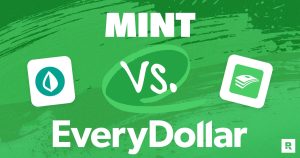Target-date funds are an increasingly popular way for Americans to invest for the future. In fact, more than $3.5 trillion was invested in target-date funds at the end of 2023, according to Morningstar. And they’re especially popular in 401(k) plans, helping workers manage their retirement finances.
Here’s what a target-date fund is, how it works and its pros and cons.
What is a target-date fund?
A target-date fund is a mutual fund (or exchange-traded fund) that gradually rebalances and reallocates assets as you get closer to retirement, typically shifting the majority of assets from riskier investments, such as stocks, to more conservative investments, such as bonds and cash. The fund is designed as a one-stop investment shop with a diversified set of asset classes.
With a target-date fund, investors pick the year they think they’ll need to access the funds, say, 2060, and then the fund management company manages everything from there.
How target-date funds work
Building a well-diversified portfolio can be overwhelming for individuals who are not investing experts. Target-date funds are popular because they simplify the process for participants, says Jean Young, former senior research associate at Vanguard Investment Strategy Group.
Here’s a quick rundown on TDFs.
- Instant asset allocation: Target-date funds offer investors the convenience of automatically allocating assets in the fund from day one. But these funds can also improve returns for investors. Some studies have shown that up to 90 percent of an investor’s return depends on how money is divided between various asset classes, from equities such as domestic and global stocks, to fixed-income investments such as bonds and cash.
- Set it and forget it investing: Target-date funds are designed for investors to set their contributions and let the funds manage the rest and adjust the asset allocation as needed.
-
Glide path strategy: A target-date fund operates on a glide path, automatically becoming more conservative as the target retirement date approaches. Think about an airplane descending on final approach to land. A target-date fund’s glide path employs a similar rationale — easing the investor to a safe financial destination at retirement.
“That’s why target-date-funds are growing at Vanguard and all the major providers,” Young says. “It’s just simply easier for people.”
- Post-retirement adjustment: Target-date funds continue to adjust asset allocations, even after the target date. For example, Vanguard’s TDFs constantly change, eventually reaching a mix of approximately 30 percent stocks and 70 percent bonds by age 72.
Target-date funds have grown to widespread popularity due to their hands-off approach, relatively strong returns, adjustments for risk tolerance over time and lower fees. Vanguard’s How America Saves 2025 report includes these data points:
- At the end of 2024, 67 percent of Vanguard plan participants were solely invested in an automatic investment program.
- 59 percent of participants were solely invested in a single target-date fund.
- The rise in TDF usage is partly due to the inclusion of automatic enrollment features in retirement plans, with 78 percent of plans with more than 1,000 participants utilizing this feature.
Pros and cons of target-date funds
Pros
- You can put your investing activities on autopilot: A target-date fund eliminates the need to monitor and adjust your portfolio and reduces the stress associated with financial planning in retirement. The fund has a defined trajectory when allocating assets. As you approach your target date, the fund will gradually make your portfolio more conservative, helping to ensure that your money is there when you need it.
- You can make adjustments if necessary: If your time horizon changes, you can switch to a more applicable fund. If you determine that you are going to work for an additional five years, you can move your money into the 2065 target-date fund or even later, if needed.
-
Fund fees are increasingly dropping: As target-date funds have become more popular and had to compete against cheaper funds, their fees have come down significantly. Their asset-weighted average expense ratio was 0.36 percent at the end of 2023, according to Morningstar. That means an investor would pay $36 annually for every $10,000 invested. That’s down from 0.87 percent in 2004, or $87 annually.
So when it comes to expenses, target-date funds compare well to the average mutual fund, though the average expense ratio is still higher than the average ETF.
Cons
-
Fund expenses can add up: Saving for retirement requires spending some money. Target-date funds all have expense ratios, and it’s important to compare these before selecting one for your money. You may notice that some target date funds carry higher fees than the index funds within them. Keep these expenses as low as possible to maximize your potential earnings.
While the fees have been coming down, you may be able to find cheaper funds and manage the portfolio yourself.
-
No earnings are guaranteed: Target-date funds are investments, and all investments have the potential to lose value. It’s a simple reality of saving for retirement. You need to accept some degree of risk when investing for retirement.
For example, when interest rates rose in 2022, some funds thought to be positioned conservatively saw large declines as the rise in rates hurt both bond and stock prices. The Vanguard Target Retirement 2025 Fund (VTTVX) fell more than 15 percent in 2022, despite being close to its target date.
-
Funds may get too conservative too quickly: As you approach your target date, target-date funds move more of your money from stocks to bonds. However, this approach lowers your overall potential return, creating a drag on performance in exchange for relative safety. If the fund moves too much money into bonds too quickly, it could severely hit your potential retirement income. And with many seniors living more than two decades after they retire, retirees may need the extra growth provided by stocks.
One solution: Buy a target-date fund that’s five or 10 years later than you actually want to retire. This later-dated fund will have a higher allocation to stocks, potentially giving you more growth.
Are target-date funds a good investment?
Target-date funds have numerous beneficial features, making them a good choice for many investors. However, there are some things you should keep in mind about target-date funds.
- Know the details: Two funds may have the same target year (i.e., 2060) but have different asset allocations. One may hold more stocks (a more aggressive approach), while another is more conservative.
- Read up on the fund: Each target-date fund includes a prospectus and documentation that explains its asset allocation and fees.
- TDFs are just the beginning: After the fund reaches its target date, it shifts to a retirement fund. At that point, consider keeping some money in the fund and allocating some cash toward regular income when you retire.
A financial advisor can offer guidance on the right portfolio mix and knowledge about the limitations of passively investing through target-date funds. They will likely account for your entire retirement plan, including Social Security.
“In the accumulation phase, the target-date fund does a pretty decent job when the only thing we know about you is the year you might retire,” Young says. “Ultimately, we should all have a custom solution that takes into account not just what you have in your current plan with your current employer, but your entire asset picture.”
Can I hold onto a target-date fund after the target date?
Certainly, you have the option to hold onto your target-date fund even after reaching the specified retirement date. These funds continue to operate and adjust their asset mix, often becoming progressively more conservative.
For instance, “through” target-date funds continue altering their asset mix for years after the target date until they stabilize at a more conservative allocation. Meanwhile, “to” target-date funds reach their most conservative asset mix right on the target date, with no significant adjustments thereafter.
It’s important to note that some target-date funds might merge into other funds designed to provide income during retirement. Should such a merger occur, it’s crucial to review the new fund’s prospectus to ensure it suits your investment objectives and risk tolerance.
Bottom line
Target-date funds offer a good, but not perfect, solution for investors who don’t want to manage their own retirement portfolio. Despite their drawbacks, many investors will find them to be a valuable addition to their portfolio, and they’re becoming increasingly less expensive, meaning investors can enjoy their benefits for only a relatively small premium over traditional funds.
Editorial Disclaimer: All investors are advised to conduct their own independent research into investment strategies before making an investment decision. In addition, investors are advised that past investment product performance is no guarantee of future price appreciation.
Read the full article here












